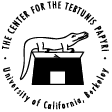 Demotic Egyptian Transliteration and Unicode
Demotic Egyptian Transliteration and Unicode Demotic Egyptian Transliteration and Unicode
Demotic Egyptian Transliteration and UnicodeView the information on this page:
in Sindhi translation
In support of its own research and publication efforts related to its many Demotic papyri, and to serve other papyrologists and Egyptologists, the Center for the Tebtunis Papyri is pleased to make available tools for entering ancient Egyptian transliteration in accordance with the Unicode standard. This document and the downloadable keyboards and font are the work of Donald Mastronarde, who also supports polytonic Greek Unicode input and fonts for Mac OS X through the GreekKeys package of the American Philological Association. CTP also makes available a free input (Mac or Windows) for Coptic Unicode.
A list of the characters used in the two major transliteration schemes is provided in a PDF document included in the download. Most of the characters needed are already accepted in the Unicode standard and are present in one or more of the major system fonts of Mac OS X and Windows XP.
Version 5.1 of Unicode added characters for Egyptological alef and ayin at U+a722 - U+a725. That leaves only the yod character as difficult to handle in strict Unicode. In the discussions by the Unicode Technical Committee in early November 2005, it was decided that no new diacritic would be added for the yod modifier attached to i or I, but that an existing modifier should be used (with OpenType ligatures allowing font designers to make the precomposed character look any way they prefer). It is not at all likely that this decision will ever change. The UTC suggested that the user community express a preference between U+0313 COMBINING COMMA ABOVE [ ̓ ] (this is the diacritic used for the smooth breathing of polytonic Greek, among other things) or U+0357 COMBINING RIGHT HALF RING ABOVE [ ͗ ]. Some opinions were gathered, and preferences were fairly evenly split between the two choices, and several comments asked that the UTC reconsider approving a separate code point. In 2009 another proposal resulted in UTC accepting that there is also a third option for an existing diacritic that might be used: U+0486, CYRILLIC SMOOTH BREATHING [ ҆]. Version 3.50 and later of New Athena Unicode font allows for any of these three options for strict Unicode, as well as having the yod characters available with a Private Use Area code point.
For interim use, the missing characters were added with temporary unofficial code points in the Private Use Area of Unicode in the free font New Athena Unicode (version 2.6 or higher). With the long-awaited arrival of OpenType ligature support in Word 2008 for Mac OS X, it is no longer necessary to use the interim PUA code points, but some users may have to do so if they exchange documents with users who still use Word 2004.
There is a choice between a very strict, a strict, and a temporary less strict way to enter the characters needed for Demotic.
The very strict method is to use only existing code points in the Unicode 5.1 standard and to express composed characters (such as c with caron above) by using two code points (in this example, first type c and then enter the character encoded as the combining caron). In some applications, the composed characters on the screen and in print may look less than perfect, if adequate ligature support is not provided by the chosen font or the application.
The strict method is to make minimal use of the Private Use Area as an interim measure (only for yod), and to enter the other characters using either the separate code points as for the previous method or using the code points for precomposed characters (when they exist). There are a few characters that lack a precomposed form in Unicode and these may appear less than perfect.
The least strict way is to use as many precomposed characters as possible and to use the Private Use Area both for yod and for a few other precomposed characters not in Unicode. This should be regarded as an interim measure, necessary for practical cross-platform word-processing right now among users who do not own the latest software. (As of 2019 and version 12 of Unicode, there is no need to use PUA for yod.)
To enter the full range of characters needed for transliteration, one can use a specialized keyboard or input, as offered below, or one can use alternative methods for input of unusual characters, as explained at the GreekKeys help site.
For those using Mac OS, an input is provided, entitled "Demotic Egyptian." Version 3 of this is now available for download (first posted Dec. 1, 2019). Version 3 adds direct input for small and capital yod glyphs now that Unicode version 12 has adopted the characters it calls Latin Capital (and Small) Letter Glottal I. Version 2 of 2009 supported previous new code points, OpenType ligatures for all three options for yod, and additional characters needed for Arabic transliteration. The documents accompanying the download explain how to install and use it. This input is specifically designed to be used with New Athena Unicode font (to be downloaded separately), since this is one of the very few font that has all the characters needed.
A comparable keyboard layout for Demotic Transliteration for Windows, revised for installation on Windows 7 in 2012, downloaded here. This may be used to enter strict Unicode or characters in PUA. The document accompanying the download explains how to install and use it. This input is specifically designed to be used with New Athena Unicode font (to be downloaded separately), since this is currently the only font that has the PUA assignments that the input assumes. This keyboard has not yet been revised for the Unicode 12 additions since I currently lack access to a Windows computer.